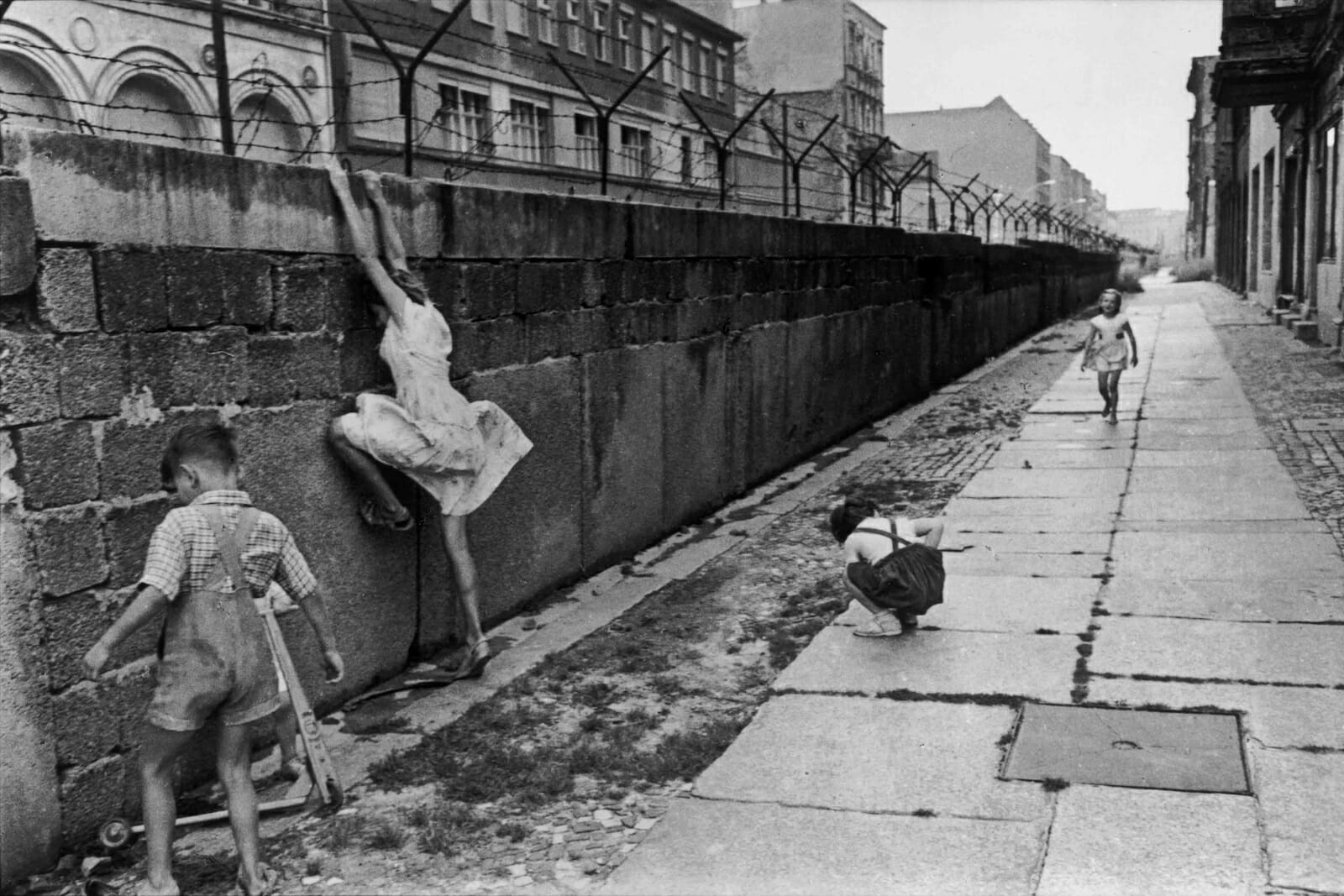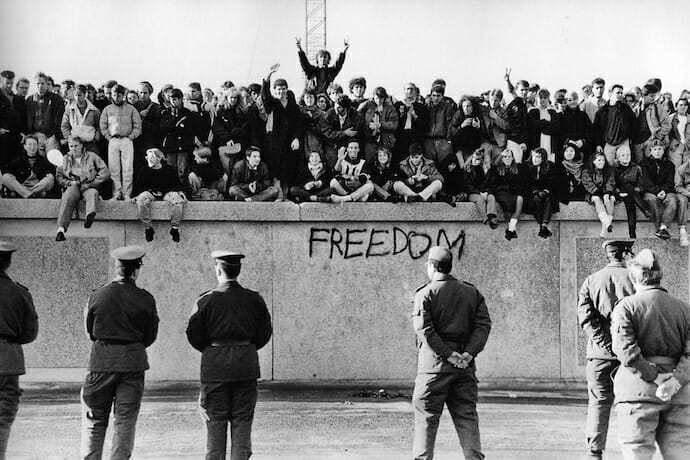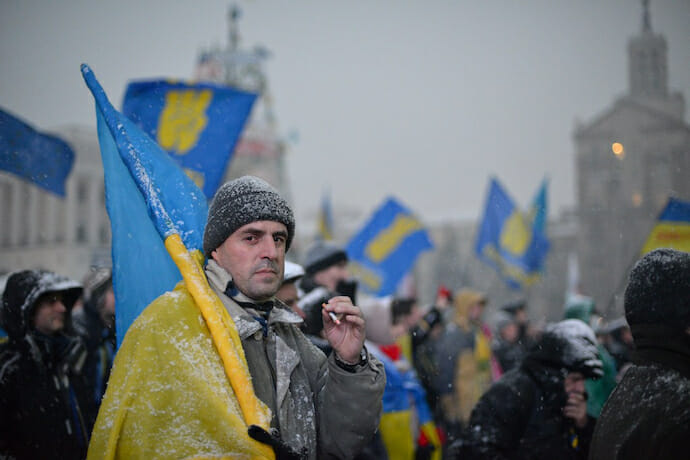
Russia and the West: How the West Won the Cold War but Lost the Peace
The current conflict between the West and Russia, which has pushed Russia into the waiting arms of China began due to the arrogance and short sightedness of the West.
At the tail end of the Cold War, West Germany and East Germany wanted to reunite. The then Soviet Union (now Russia) would need to give its permission before this happened in accordance with the 1975 Helsinki Accords. On February 9, 1990 then-Secretary of State James Baker suggested to the Soviet leaders that in return for allowing West Germany and East Germany to reunite after the fall of the Berlin Wall, and allowing a reunited Germany to remain in NATO, that NATO would not move 1 inch eastward towards the then border of the Soviet Union.
While no written guarantee was provided to the Russian leaders, less than a week later, Premier Mikhail Gorbachev agreed to allow reunification talks to begin between West Germany and East Germany. Then, less than 1 month later in March of 1990, the U.S. began planning to organize Eastern Europe into a sphere of U.S. influence and expanding NATO to the very borders of the Soviet Union.
Despite the promises made by the West, in 1999 NATO agreed to the admission of Poland, Hungary, and the Czech Republic into NATO. This was done despite vehement protests by the Russian government which accused the West of reneging on the agreement reached by the Soviet Union with Western Europe and the United States. The admission of Poland, Hungary and the Czech Republic was followed by the admission of several Eastern European countries in 2004. These nations are Bulgaria, Estonia, Latvia, Lithuania, Romania, Slovakia and Slovenia. Since then, NATO in 2019 has threatened to expand its presence to the southern border of Russia by officially recognizing Bosnia and Herzegovina, Georgia, North Macedonia and Ukraine as aspiring members of NATO. This is a direct threat to the national security of Russia by placing, what Russia feels, are hostile forces reminiscent of the German invasion of southern Russia in 1942.
“Russia is a riddle wrapped in a mystery inside an enigma.” – Winston Churchill
This famous quote by Sir Winston Churchill is puzzling, as he was a serious student of history. A close look at the history surrounding the relations between Russia and the world would easily explain the suspicion that Russia has of the outside world.
Probably the most decisive moment in the forming of Russian distrust of foreigners has its roots in the occupation of Russia by the Mongol Horde from 1240 A.D. to 1480 A.D.
Before the rise of Moscow as the principal city of the Rus, Kyiv, now the capital of Ukraine, was the center of Russian civilization. In 1240 A.D., the Mongol Army under the nominal command of Batu Khan sacked Kyiv and opened the door to the Mongol conquest of Russia and the invasion of Europe. From 1240 A.D. to 1480 A.D., the Golden Horde ruled Russia. It was during this time that the city of Moscow surrounded by a fortress, called a Kremlin on the banks of the Moscow river became the enforcers of the Mongol Horde, and from 1328 the Horde’s tax collection surrogates.

The Tver rebellion in 1327 allowed Moscow to gain ascendancy over its rival cities in Russia by supporting the Mongol’s by putting down the Tver rebellion in 1328. As a result of Moscow’s support, the ruler of the Golden Horde granted the Russian cities of Novogorod and Kostroma as duchies to Moscow, and later Tver itself after the leader of the rebellion was captured and turned over to the Mongols; there he was quartered alive along with his son. The Mongols then commissioned the Prince of Moscow to collect the yearly tribute that the Horde had imposed on the subjugated cities, towns and villages of Russia.
This allowed Moscow to become the most powerful and principal city of Russia. Moscow was able to increase its power over Russia by bringing under its controls those cities and areas that were not able to meet their tax burden and adding them to the over lordship of Moscow. This increased the power of Moscow so much that in 1480 A.D., at the Battle of the Ugra River, The Duchy of Moscow under Ivan the Third was able to refuse payment of the required tribute to the Golden Horde, and forced the Mongols to retreat. This battle marks the end of the rule of Russia by the Golden Horde. The grandson of Ivan the III would at the age of 3 become the Prince of Moscow, and upon reaching his majority he was crowned “Tsar of all the Russia’s.” This was the first Tsar of Russia and the last competent ruler of the Rurikid line. Ivan the 4th was known as Ivan the Formidable and as Ivan the Fearsome in Russia. In the West, he is known as “Ivan the Terrible.”
In the last 200 years, Europe has invaded Russia 4 times.
There is a constant fear in Europe that Russia will invade Europe, and place Europe under the domination of Moscow. Yet, if one reads the history of political relations between Russia and Europe for the last 200 years, it is Russia that has had to fear Europe and with good reason. Beginning with the Napoleonic invasion of Russia in 1812 to the Nazi invasion of 1941, Russia has had to fight for her polity and her life many times. The most serious invasion of these four invasions of Russia took place during the summer campaign in Southern Russia of 1942, lasting to the spring of 1943, which culminated in the Battle of Stalingrad.
So, unless there has been some serious change in the dynamics between Russia and the West, Europe, with a population of 508 million and a GDP of $18.8 trillion, has nothing to really fear conventionally from a Russia that has a population of 144.5 million people and a GDP of $1.578 trillion.
The Euromaidan movement and West’s support for the Ukrainian revolution.

The Euromaidan’s Movement began as a result of the delay by the government of Viktor Yanukovych of the association agreement with the European Union. The EU was offering Ukraine $838 million in loans in return for major changes to Ukraine’s laws and regulations. Russia was offering $15 billion in loans and no demand for changes to its laws and regulations.
With Russia then being Ukraine’s biggest trading partner, President Yanukovych at the last minute decided to take Russia’s offer and to remain outside the European Union. Europe, along with the United States, launched a publicity campaign calling on the people of Ukraine to force the government of Ukraine to change its position, and to sign the association agreement with the EU.
In December of 2013, Senator’s John McCain and Chris Murphy addressed Ukrainian crowds urging them to continue to resist the government’s decision to remain in the economic and political orbit of Russia. On February 4th, 2014 Assistant Secretary of State Victoria Nuland and the American Ambassador to Ukraine in a leaked phone call discussed plans to help form an interim government after the legitimate Ukrainian government had been dissolved.
In November of 2013, the EU Enlargement Commissioner, Štefan Füle, declared that he was happy to see that democracy had reached a point where young people could demonstrate peacefully and legally. On the same day, members of the European Parliament responsible for the Eastern Partnership policy, Elmar Brok and Jacek Saryusz-Wolski, warned Ukraine not to use force against the protestors or there “would be consequences.”
Shortly thereafter on February 22, 2014, the legitimate Ukrainian government was overthrown, and the elected president of Ukraine had to flee for his life. It was after the overthrow of the elected government of Ukraine that Russia annexed the Crimea.
The Crimea in Russian History
The Crimea has been a part of Russia since 1783 when Catherine the Great defeated the Ottoman Empire, absorbed the Crimea and then built the cities of Sevastopol which became the center of the Russian Black Sea Fleet and later on Simferopol which became the center of the Tauride province. From 1921 to 1945, Crimea was the Crimean Autonomous Soviet Socialist Republic until 1945 when it became an Oblast of the Russian SSR.
Later, in 1954, in a move that was done to help Nikita Khrushchev in his attempt to solidify Russian control over Ukraine, the Crimea was transferred from the Russian SSR Oblast to UkrSSR. Khrushchev was then struggling with Soviet Prime Minister Georgy Malenkov for control of the Russian Communist Party and saw an opportunity to woo the support of the Ukrainian Communist Party boss, Oleksiy Kyrychenko. It was not until 1955 that Khrushchev was able to fully consolidate his control over the Communist Party and the rule of the Soviet Union.
After the fall of the Soviet Union in 1991, Ukraine declared its independence from Russia, and since the Crimea had been part of the Ukrainian Oblast, the Crimea became part of the new nation of Ukraine.
Why the Crimea is important to Russia’s national security and why a political solution is necessary to end the Ukrainian crisis.
After the 2014 Euromaidan Revolution, and the establishment of a government hostile to Russia, Vladimir Putin reacted to what he believed was an existential threat to the national polity of Russia. A careful examination of recent history bears him out and explains why Russia will not willingly allow the Crimea to fall under the political control of any other power.
The Crimea is the last natural militarily defensible obstacle to any invasion of southern Russia. Before the German Army could begin its summer campaign in southern Russia in 1942, the port city of Sevastopol in the Crimea had to be reduced in a long and costly siege. It is for this reason that the summer campaign in southern Russia code-named “Blue,” was without the 11th Army when Blue was kicked off on June 28, 1942.
The 11th Army was the Army that had been fighting in the siege of Sevastopol and had been mauled so badly during the siege that 11th Army was prevented from participating in the 1942 summer campaign as had been planned for in Blue. This seriously weakened the 6th Army to where, when it was locked in street to street fighting at Stalingrad later in the year, the 6th Army did not have the 11th Army’s strength and was unable to dislodge the Russian defenders from the city.
Once past Crimea, there is no natural defense for Russian military forces until the Don River to impede any invading force. From the Crimea to the Don there is only a flat plain that is excellently suited for mechanized warfare. With NATO being so strategically aggressive, it would be the height of military folly for Russia to allow the Crimea to be in the hands of any foreign power.
With the West’s actions being so strategically threatening to Russia since the fall of the Berlin Wall, and the expansion of NATO to the political frontiers of Russia, Russia has countered this by becoming closer economically and militarily closer to China, which is a more long-range threat to Russia than the West is.
In order to repair the damage done to the relations between the West and Russia, a political settlement is necessary to remove Russia from the embrace of China, settle the tensions between the West and Russia, and bring Russia, finally, into the economic and political life of the West.

